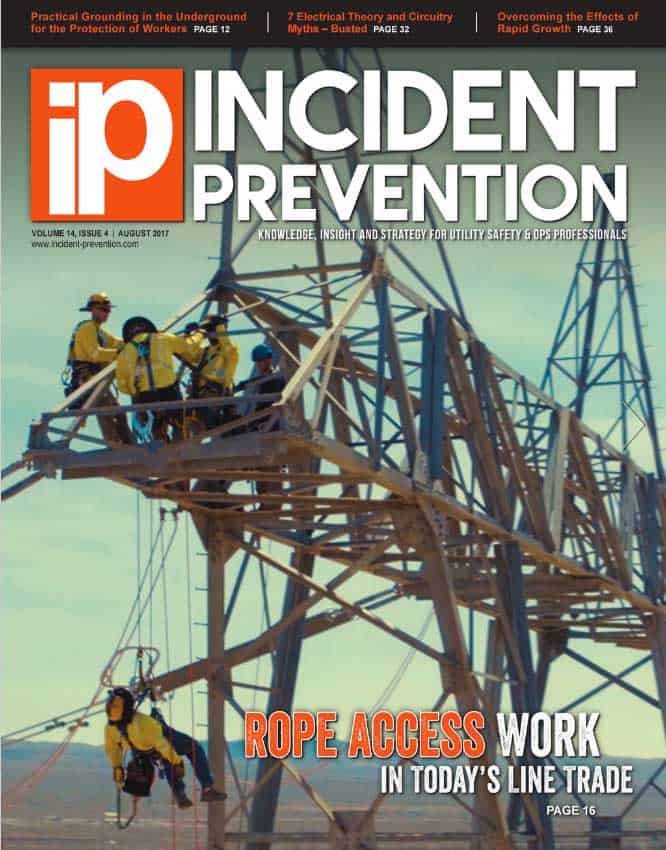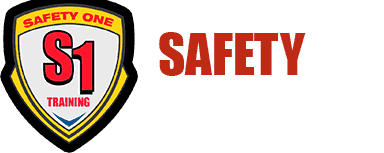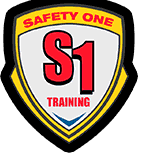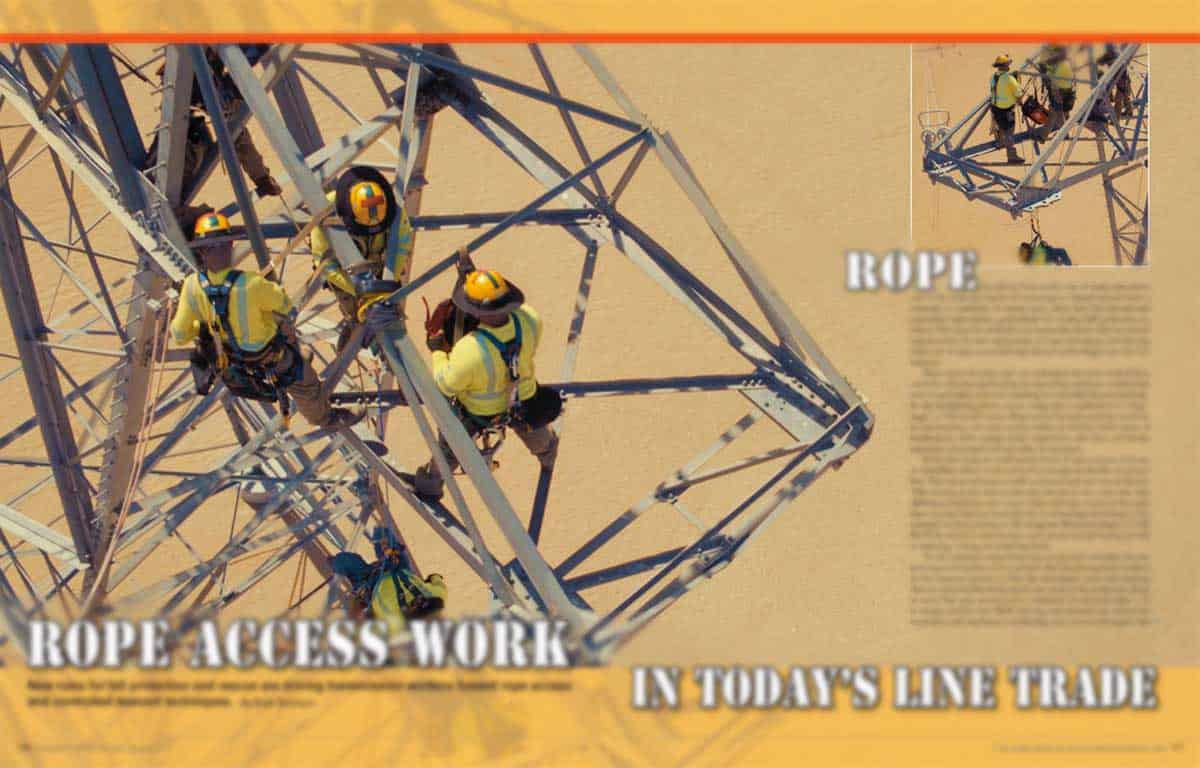09 Aug Rope Access, Controlled Descent, and Rope Rescue
As safety experts, we were recently contacted by the Incident Prevention Magazine to discuss the techniques of rope access in today’s trade. The full article is published in the August issue, and here is a summary of what we shared with the magazine:
In the line of trade, the use of ropes has been a key part of performing rescue techniques for decades. While the primary concept of the rope rescue technique is still relevant in today’s trade, the technological advances have created new opportunities with different sets of tools and applications in the line industry.
WHAT’S EVOLVED
In the past, linemen relied on heavy equipment and scaffolding to reach workspace at height. Rope access allows for a wide variety of work to be performed safely at high elevations or other hard to reach areas without the use of heavy equipment.
One primary and distinct characteristic that separates modern rope access from what was used in the early days of the line trade is the two-rope system.
A typical two-rope system consists of a main or working line ran next to a backup line. It provides a greater margin of safety as the second line is there purely as a safety or rescue line. A single failure of a carabiner or device on the mainline will not cause a catastrophic system failure.
If an incident or need for assistance arises, the second line is available and can easily be rigged by rescuers for a path to the injured and a means to lower a worker to the ground.

BENEFITS OF ROPE ACCESS
There are many benefits of utilizing rope access in trade, to name a few:
- Appropriate rope access and rope rescue techniques provide additional safety to linemen working at height.
- Rope access is very economical compared with other means to access workspace at-height, such as elevated work platforms, or assistance with heavy equipment.
The rope access techniques allow operations to be carried out fast and efficiently.
WHAT TO CONSIDER WHEN SETTING UP THE LINE
First, the rope must follow the climbing path up the step bolts, so a redirect made from a sling and carabiner must be added at the waist of the structure as the layback begins. Second, minimum approach distances must be considered, especially in windy or stormy weathers.
Check out our Rope Access Certifications to learn more about our rope access capabilities and the rope access training courses we offer at Safety One.
Safety One Training is a top-rated provider of fall protection training, snowcat/extreme-weather condition training, and safety & survival equipment. If you have any further questions regarding the training courses we provide, click here to contact us or give us a call at +1 (800) 485-7669.



No Comments